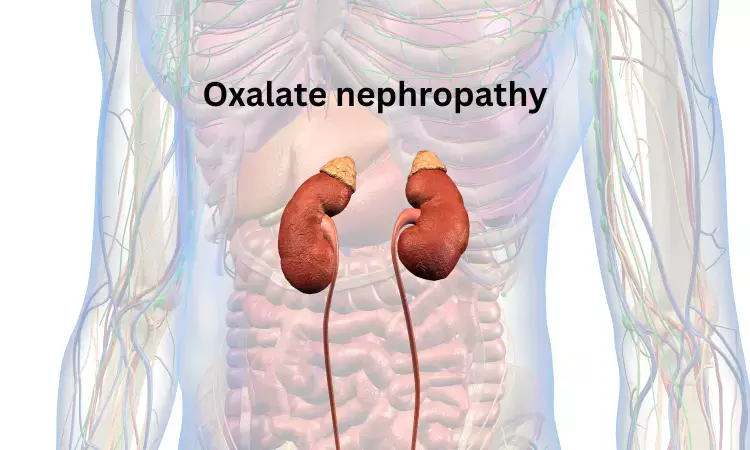- Home
- Medical news & Guidelines
- Anesthesiology
- Cardiology and CTVS
- Critical Care
- Dentistry
- Dermatology
- Diabetes and Endocrinology
- ENT
- Gastroenterology
- Medicine
- Nephrology
- Neurology
- Obstretics-Gynaecology
- Oncology
- Ophthalmology
- Orthopaedics
- Pediatrics-Neonatology
- Psychiatry
- Pulmonology
- Radiology
- Surgery
- Urology
- Laboratory Medicine
- Diet
- Nursing
- Paramedical
- Physiotherapy
- Health news
- Fact Check
- Bone Health Fact Check
- Brain Health Fact Check
- Cancer Related Fact Check
- Child Care Fact Check
- Dental and oral health fact check
- Diabetes and metabolic health fact check
- Diet and Nutrition Fact Check
- Eye and ENT Care Fact Check
- Fitness fact check
- Gut health fact check
- Heart health fact check
- Kidney health fact check
- Medical education fact check
- Men's health fact check
- Respiratory fact check
- Skin and hair care fact check
- Vaccine and Immunization fact check
- Women's health fact check
- AYUSH
- State News
- Andaman and Nicobar Islands
- Andhra Pradesh
- Arunachal Pradesh
- Assam
- Bihar
- Chandigarh
- Chattisgarh
- Dadra and Nagar Haveli
- Daman and Diu
- Delhi
- Goa
- Gujarat
- Haryana
- Himachal Pradesh
- Jammu & Kashmir
- Jharkhand
- Karnataka
- Kerala
- Ladakh
- Lakshadweep
- Madhya Pradesh
- Maharashtra
- Manipur
- Meghalaya
- Mizoram
- Nagaland
- Odisha
- Puducherry
- Punjab
- Rajasthan
- Sikkim
- Tamil Nadu
- Telangana
- Tripura
- Uttar Pradesh
- Uttrakhand
- West Bengal
- Medical Education
- Industry
Case of Purslane induced oxalate nephropathy: A report

Nephrotoxicity is characterized as rapid deterioration in the kidney function due to toxic effect of medications and chemicals. Toxic nephropathy is an important cause of renal injury, such as herbal nephropathy, and the mechanisms underlying renal poisoning include direct damage to tubular cells, renal ischemia, crystalluria, and allergic reactions.
Primary hyperoxaluria is an autosomal recessive disease that usually develops in childhood, whereas secondary hyperoxaluria is observed following excessive oxalate intake or reduced excretion, with no difference in age of onset. Oxalate nephropathy may be overlooked, and the diagnosis is often delayed or missed owning to the physician’s inadequate awareness of its etiology and pathogenesis.
A recent case study in BMC Nephrology discusses two cases of acute kidney injury (AKI) associated with the excessive consumption of purslane, one of which was confirmed as oxalate nephropathy by renal pathology and recovered rapidly after renal replacement therapy. The pathogenesis of hyperoxaluria with two case reports, and this report throws light to make appropriate treatment plans in clinical settings in the future.
Researchers report two cases of acute kidney injury, A 58-year-old woman with diabetes mellitus (DM) presented with elevated creatinine level and a 60-year-old woman was referred to the nephrology department owing to abdominal distension, vomiting, and chest tightness. The researchers considered it to be due to oxalate nephropathy in the setting of purslane (portulaca oleracea) ingestion. The two patients were elderly and presented with oliguria, nausea, vomiting, and clinical manifestations of acute kidney injury requiring renal replacement therapy. One patient underwent an ultrasound-guided renal biopsy, which showed acute tubulointerstitial injury and partial tubular oxalate deposition. Both patients underwent hemodialysis and were discharged following improvement in creatinine levels.
The researchers concluded that “Our report illustrates two cases of acute oxalate nephropathy in the setting of high dietary consumption of purslane. If a renal biopsy shows calcium oxalate crystals and acute tubular injury, oxalate nephropathy should be considered and the secondary causes of hyperoxaluria should be eliminated.”
Reference: Wang, X., Zhang, X., Wang, L. et al. Purslane-induced oxalate nephropathy: case report and literature review. BMC Nephrol 24, 207 (2023). https://doi.org/10.1186/s12882-023-03236-9.
MSc. Neuroscience
Niveditha Subramani a MSc. Neuroscience (Faculty of Medicine) graduate from University of Madras, Chennai. Ambitious in Neuro research having worked in motor diseases and neuron apoptosis is interested in more of new upcoming research and their advancement in field of medicine. She has an engrossed skill towards writing and her roles at Medical dialogue include Sr. Content writer. Her news covers new discoveries and updates in field of medicine. She can be reached at editorial@medicaldialogues.in
Dr Kamal Kant Kohli-MBBS, DTCD- a chest specialist with more than 30 years of practice and a flair for writing clinical articles, Dr Kamal Kant Kohli joined Medical Dialogues as a Chief Editor of Medical News. Besides writing articles, as an editor, he proofreads and verifies all the medical content published on Medical Dialogues including those coming from journals, studies,medical conferences,guidelines etc. Email: drkohli@medicaldialogues.in. Contact no. 011-43720751


